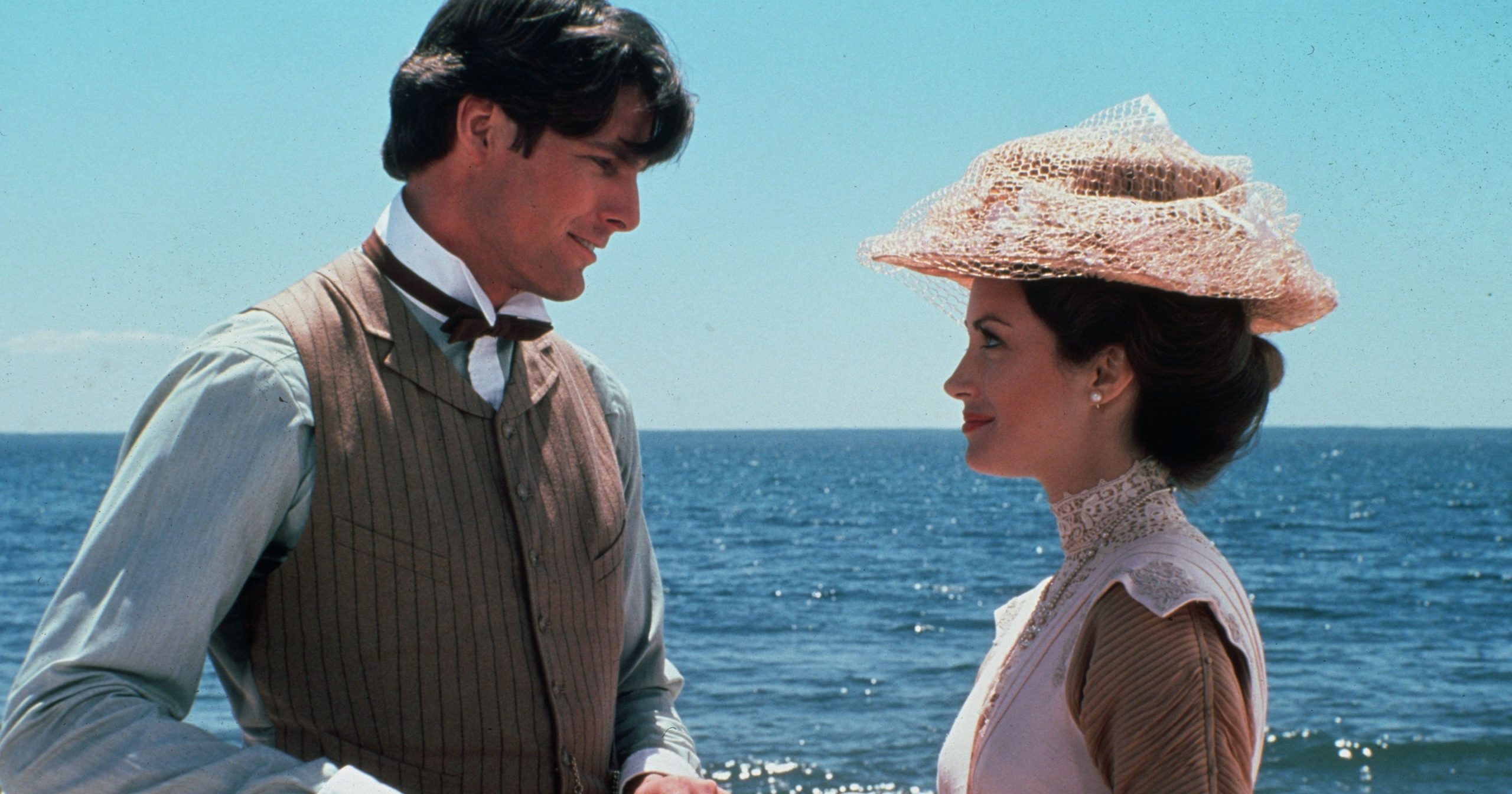I miss Christopher Reeve.
I don’t say that in a fanboy “I miss my favourite Superman” way, though that’s certainly a factor. In his four film performances as the Man of Steel, Reeve essayed the role with sincerity and integrity, and — more importantly — without embarrassment or irony. The tagline that sold 1978’s Superman — “You’ll believe a man can fly” — was as much a tribute to Reeve as the special effects wizardry on display. People like to joke about the four Chrises that dominate modern comic book cinema — Evans, Hemsworth, Pratt, Pine — but Reeve was the first Chris — nay, the first actor — to tackle a major comic book role in a blockbuster film and to struggle with the typecasting that accompanies it. In many respects, Reeve had a rougher ride. He never had a second franchise in his back pocket, unlike Pratt (Guardians of the Galaxy, Jurassic World) and Pine (Star Trek, Wonder Woman). He never got multiple shots in expensive failures like Hemsworth (In the Heart of the Sea, Blackhat, Men in Black: International), nor a chance to headline an Oscar contender like Pine (Hell or High Water) or critical darlings like Evans (Snowpiercer, Knives Out). And unlike Evans, he wasn’t afforded an opportunity to hone his heroic Boy Scout character over successively stronger films: the dip in quality between Superman II and III is jarring, and watching Superman IV is like falling down six flights of stairs and landing in a shark’s mouth.
But I love seeing Reeve in his non-Superman roles too. I love seeing the small and sometimes odd choices he made on screen. The films themselves are hit and miss, and you cannot underestimate how vital a catalogue of popular titles is to a star’s longevity. It’s why folks like Julia Roberts and Tom Cruise became stars and remain pop culture staples, and why, in contrast, someone like Mickey Rourke — a better actor, but one who played scuzzy characters in scuzzy films — isn’t as popular. With Reeve, Superman and Superman II granted him cultural longevity, but nobody is tweeting about Monsignor or Rose and the Jackal or Switching Channels. There’s some great work in his filmography though for completists, in films like Death Trap and The Bostonians and Street Smart and Noises Off and The Remains of the Day, and I enjoy his small turn in the original Batman V. Superman, aka Speechless.
And in the paragraphs that follow I’ll be advocating for Jeannot Szwarc’s Somewhere in Time — which celebrates its 40th anniversary this year—as an absolutely special title that deserves attention.
Reeve plays Richard Collier, a hot young playwright who becomes transfixed by and falls in love with the portrait of an early twentieth century stage actress. Collier strips his surrounds of all contemporary paraphernalia and uses self-hypnosis to will himself back to 1912. There he meets and romances the object of his adoration, Elise McKenna (Jane Seymour), but must also contend with her controlling and ambitious manager (Christopher Plummer).
The 1980s was a banner decade for time travel onscreen, used to great effect in Somewhere in Time, Back to the Future, The Terminator, Star Trek IV: The Voyage Home, and Time After Time (technically a 1979 film, but one of the first theatrical releases of the 1980s in Australia). Like The Terminator, Somewhere in Time is a doomed time travel romance, though Szwarc’s film is distinctly more low-fi and shorn of kinetic action scenes. Whilst Somewhere in Time is the gentlest and least interested in sci-fi trappings of these five films, the story first originated as Bid Time Return, a 1975 novel by a bona fide sci-fi/fantasy master, Richard Matheson. Matheson is a great yet perennially underrated author of novels, stories, films, and television (including the early Spielberg showcase Duel and multiple episodes of The Twilight Zone). One of Matheson’s particular gifts—exemplified by the novels I Am Legend and The Incredible Shrinking Man, and the short story Nightmare at 20,000 Feet, which became one of the most famous Twilight Zone episodes and movie segments—is his knack for conveying the neurotic inner monologue and granular turning of the mental screws of alienated protagonists in overwhelming circumstances. Though not as finely honed as in the above works, that quality is present to some degree in Bid Time Return. And like most adaptations of Matheson’s work to screen, it’s a quality peculiar to written fiction that simply doesn’t translate to the screen. Yet Somewhere in Time as an adaptation is satisfying in a way that, say, the three screen adaptations of I Am Legend are not. Partly that’s due to Matheson adapting his own work for celluloid as screenwriter. He recalibrates the story for the screen, fleshing it out where needed beyond the protagonist’s point of view, adding several colourful support characters, concocting an ingenious introduction where the elder McKenna meets Collier in the present, and seeding in some clever time travel conceits.
Reeve and Seymour help considerably in making the characters feel fully realised onscreen. Reeve conveys Collier’s journey from aloof playwright to devoted romantic nicely. Moreover, though he’s every inch a handsome leading man and, at first glance, deceptively milquetoast, there’s a freak flag that Reeve lets fly from time to time (I can’t imagine you get to be one of Robin Williams’ best friends without a smidgen of weirdness) that shines through in Somewhere in Time via some cute oddball touches, such as when Collier attempts (and fails) to act suitably “old timey” in his 1912 surrounds.
Jane Seymour has, in some respects, the trickier character. She inhabits the same role as Linda Hamilton in The Terminator — a woman whose picture alone compels a man to travel back in time to meet her — yet Sarah Connor has the added carrot of being the mother of humanity’s foremost future freedom fighter, where Elise McKenna is merely a stage actress. McKenna thus becomes an almost Helen of Troy-esque figure: a woman whose beauty, to quote Christopher Marlowe, launched a thousand ships (or, in this case, compelled time travel), a quality that stirs the imagination in myth and literature but sets a high bar for actresses to fulfil onscreen (even beauties like Elizabeth Taylor and Diane Kruger who’ve portrayed Helen of Troy on celluloid don’t quite live up to that high benchmark). However, Seymour is credible as the object of Richard’s affection; better still, she is credible as the human being behind the portrait, radiating both outer and inner beauty and giving texture and nuance to McKenna.
Jeannot Szwarc’s filmography mightn’t, at first glance, inspire much confidence. His preceding film, Jaws 2, is an admittedly solid, decent creature feature (the success of which helped propel Somewhere in Time into existence) but suffers the acute misfortune of following one of the most popular films of all time. Subsequent 1980s credits include Supergirl and Santa Claus: The Movie, both critical and commercial whiffs with little celluloid footprint, which — given some of the detritus from the 1980s that retains a cultural foothold — is really saying something. But as Walter Hill remarked in a recent episode of the Brett Easton Ellis podcast, you only need one great film to leave a mark, and Somewhere in Time is that film for Szwarc. It’s a delicate assignment, with material that could be overwrought or ridiculous if handled poorly, but Szwarc’s touch here is deft, and there’s an elegance and class and crispness on display that’s absent from the rest of his CV.
Szwarc has a good team behind him, including the abovementioned Matheson smartly adapting his own source novel, impeccable cinematography by Isidore Mankofsky (The Muppet Movie), Oscar-nominated costume design by Jean-Pierre Dorleac, and above all an exquisite score by John Barry (with a helping hand from Rachmaninoff). Barry was the dominant musical architect of the James Bond series for a quarter century (contributing, among other ditties, this particular favourite), composed several Oscar-winning film scores—including The Lion in Winter, Out of Africa, and Dances with Wolves—and furnished even dreck like 1976’s King Kong remake, Bruce Lee-sploitation cash-grab Game of Death, and The Specialist (basically Body Heat with Stallone and more explosions) with lush orchestral treatments, elevating them to a higher tier of pulp and lending them weight and foreboding. Somewhere in Time is one of his very best scores, which is no small compliment: it’s sumptuous, mournful, romantic work. Take the scene below, where Collier and McKenna meet for the very first time in the past, and be swept up by the juxtaposition of the scene’s stillness and Barry’s building, sweeping, swooning composition.
In my recent piece on The Blues Brothers and Fame, I noted that with the exception of Star Wars sequel The Empire Strikes Back, the top 10 American box office victors of 1980—9 to 5, Stir Crazy, Kramer vs. Kramer, Any Which Way You Can, Private Benjamin, Coal Miner’s Daughter, Smokey and the Bandit II, The Blues Brothers, Ordinary People—is strikingly grounded in its focus on human beings in comedic, romantic, and/or dramatic situations and couldn’t be replicated today. But it’s also a loud, brash marketplace, and there’s not really a place for a deadly earnest period romance like Somewhere in Time. According to Box Office Mojo, it clocked in at #38 on that list, half a million short of Woody Allen’s Stardust Memories at #37 and a million above John G. Avildsen’s The Formula at #39 (the fact Allen’s Annie Hall, Reeve’s Superman, and Avildsen’s Rocky were all major successes of the 1970s just goes to show the boom and bust nature of the movie business). Mercifully, the film was spared the indignity of being out-grossed by The Gong Show and Oh Heavenly Dog. But Somewhere in Time has enjoyed cult longevity, spawning a fan club and conventions at Mackinac Island’s Grand Hotel where much of the film was shot.
I think it deserves even more love. I’d argue that fans of Titanic and The Notebook — two other romantic dramas that straddle past and present, have sap streaks a mile wide, and are finely-crafted, ruthlessly manipulative weep machines — would find much to like about Somewhere in Time, and would in all likelihood be reduced to emotional goo by it.
Perhaps the highest compliment I can pay Somewhere in Time is that, despite repeated exposure over time (it’s one of my mother’s favourite films) and despite writing about it at length already (something that can often irrevocably break the toy), it’s a film I have unfinished business with, at a time when I’m actively shedding films. There are a lot of movies I’m “done” with, ready and happy to amicably part ways from and never watch again. I’m done with The French Connection. I’m waaay done with Taxi Driver. Though I called it my favourite film for many years, I’m pretty much done with Chinatown. Though I sang their praises loudly just a few weeks ago, I’m fairly done with the superhero film class of 1989–92. Yet Somewhere in Time is a film I’m not done with. I acknowledge that there’s an element of celluloid comfort food here, but more than that, Somewhere in Time is a great illustration of Roger Ebert’s belief that a movie can be a “powerful empathy machine … The great movies enlarge us, they civilise us, they make us more decent people”[1]. A little comfort, a little empathy, a little decency … not bad things to look for in 2020.
Director: Jeannot Szwarc
Cast: Christopher Reeve, Jane Seymour, Christopher Plummer
Writer: Richard Matheson, (based on the novel Somewhere in Time by Richard Matheson)
[1] Ironically, Ebert himself did not think the same of Somewhere in Time, calling the film “boring” and Reeve “stolid” and awarding it only two stars. Everyone’s a critic …



